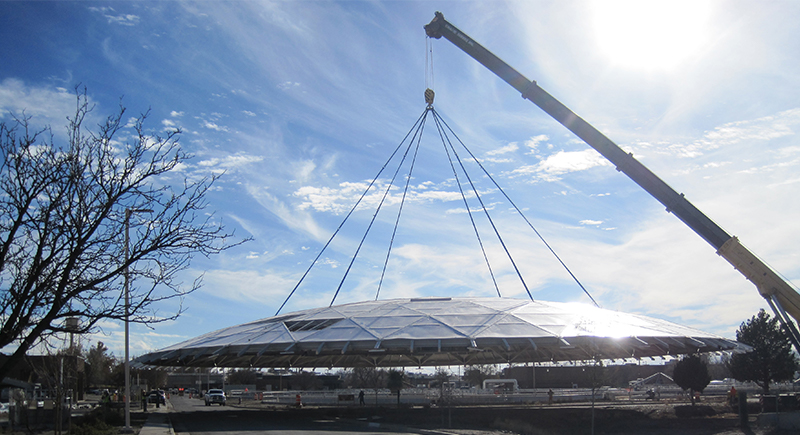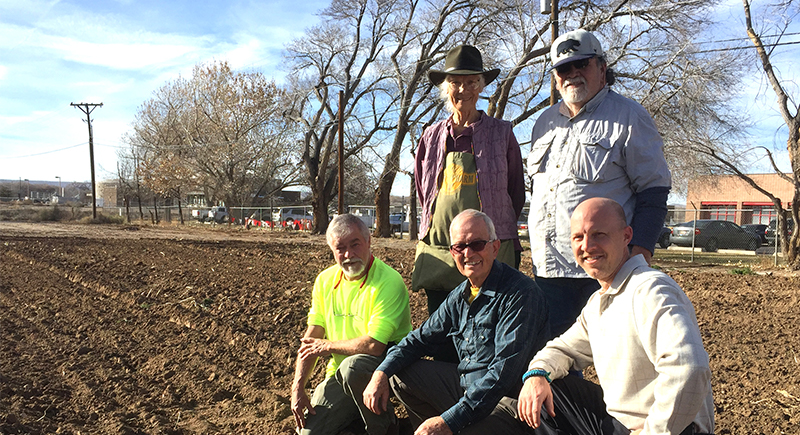Albuquerque Bernalillo County Water Utility Authority
Endangered Species to Thrive in Clean Water
Location: Albuquerque, New Mexico | Population: 681,000
Achievements
Over $200 million invested
20% of energy cogenerated
30% reduction in pollution
A Wild River with Endangered Species
Albuquerque, founded in 1706, is the most populous city in New Mexico. Rich in Spanish colonial and Native American history and culture, it’s also abundant in natural beauty—including the Rio Grande. Classified as an exotic river for its vast biodiversity, the river is an asset the local water/wastewater utility, and the Albuquerque Bernalillo County Water Utility Authority (Water Authority), works hard to protect.
Not only is the Water Authority responsible for meeting state and federal discharge rules in returning treated wastewater to the river, it must meet additional water quality standards set by Native American communities downstream. Meeting this unique set of requirements, as well as the needs of endangered species that call the Rio Grande ecosystem home, has driven the Water Authority’s efforts to be a proactive caretaker of its waters.
Since 1891, when the first sewage collection pipes were installed in Albuquerque, the municipality has been working to mitigate the environmental effects of wastewater discharge. Today, after decades of expansions and consolidations, a single, 76 MGD treatment facility, the Southside Water Reclamation Plant (SWRP) processes all wastewater generated in the Water Authority’s service area. Adding to its current features, such as a cogeneration system that produces 20% of the plant’s energy needs, the 160-acre SWRP complex is in the midst of a $250 million overhaul. Major improvements include the latest odor control technology, ultraviolet disinfection, and a re-use system that serves Albuquerque’s southeast quadrant.

Under the Clean Water Act, similar to U.S. States, a sovereign Nation can set separate water quality standards. Just five miles downstream from the SWRP is the Pueblo of Isleta, a sovereign Nation that establishes separate water quality standards that are sometimes more stringent than those enforced by the State of New Mexico and the U.S. Environmental Protection Agency (EPA). The Water Authority must comply with these mandates as well.
Adding to this challenge is the presence of endangered species, such as the Rio Grande Silvery Minnow and the Southwest Willow Flycatcher. The Water Authority works closely with the U.S. Fish and Wildlife Service to ensure the species’ survival and tests show that the minnow survives better in the utility’s clean effluent than it does in the river itself. Between 2014 and 2016 the utility financed extensive habitat restoration work along the Albuquerque stretch of the Rio Grande, planting 11,000 trees and shrubs and creating fish spawning areas along the river.
88% of residential customers believe it is important to return high quality treated water back to river

Proactive and Voluntary Efforts
Habitat protection goes beyond planting trees. A 2009 amendment to the local Sewer Use and Wastewater Control Ordinance (SUO), for example, requires dental clinics to improve disposal processes for medical waste, which can include mercury.
In 2012, the Water Authority began participation in a voluntary Capacity, Management, Operations and Maintenance (CMOM) program in the National Pollutant Discharge Elimination System (NPDES) permit issued by the EPA. With a focus on fats, oils, and grease (FOG) removal, the program has targets for line cleaning and closed-circuit television (CCTV) inspection. The CMOM program is extremely successful, reducing Sanitary Sewer Overflow (SSO) events by over two-thirds in the past seven years.
The water quality criteria in the latest NPDES permit are based on Pueblo of Isleta water quality standards for wildlife. The new NPDES permit requires the Water Authority to conduct a fish tissue study and implement a mercury minimization plan. Process improvements made by the utility to meet these permit requirements have dramatically improved local water quality, with large reductions in nutrients, in particular ammonia and total inorganic nitrogen.

Social and Community Outcomes
Many homeowners with private wells in the Albuquerque area have experienced issues with nitrogen contamination from septic systems. The Water Authority has worked with the government of Bernalillo County to extend water and wastewater service to these areas and make it affordable, with grant funding and extended payment plans (up to seven years) to pay utility connection fees.
The Water Authority conducts surveys every other year to track its customer service performance. In the 2018 Biannual Customer Survey, 94% of residential customers and 98% of commercial customers expressed satisfaction with the services they receive from the Water Authority overall. In addition, the survey has shown that 88% of residential customers believe it is important to return high-quality treated water back to the river.
Public sentiment is cultivated through an extensive education and outreach program, including a watershed protection website that keeps customers informed and suggests actions to protect their watershed. More significantly, the program includes a full-time education coordinator and a team of educators that conducts tours, classroom presentations, puppet shows, and field trips to the river for all public school fourth-grade classes in Albuquerque, reaching more than 18,000 students annually.
Tell Your Story
The success of clean water agencies depends on everyone sharing their own stories of success. We'd love to help you tell your story!
Find Out More